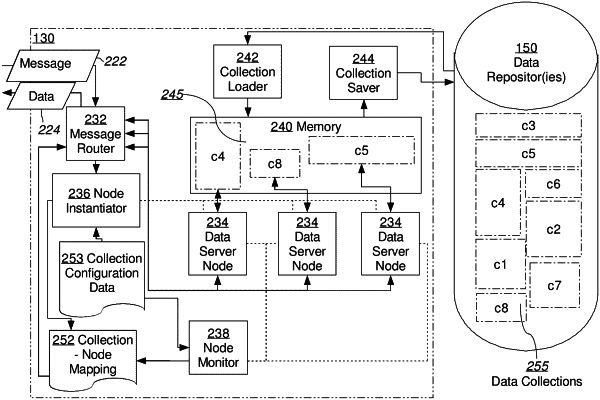| CPC H04L 47/745 (2013.01) [G06F 16/248 (2019.01); G06F 16/2477 (2019.01); G06F 16/9535 (2019.01); H04L 41/069 (2013.01); H04L 41/0806 (2013.01); H04L 67/025 (2013.01); H04L 67/75 (2022.05); H04L 67/02 (2013.01)] | 17 Claims |

|
1. A method comprising:
creating a plurality of time-stamped, searchable events from machine data;
executing in parallel a plurality of data server nodes that service messages across one or more portions of the plurality of time-stamped, searchable events, wherein each portion assigned to each data server node of the plurality of data server nodes is unique among the plurality of data server nodes;
for each message received, sending the message to a data server node, of the plurality of data server nodes, to cause the receiving data server node to perform a data operation associated with the received message;
determining that a particular data server node, of the plurality of data server nodes, has failed to process any messages sent to the particular data server node within a certain amount of time;
initiating termination of the particular data server node to terminate processes or threads executed by the particular data server node;
upon terminating the particular data server node, receiving a new message indicating a data operation to perform with respect to a particular data collection, identified via a collection identifier, assigned to the particular data server node;
for the new message, determining that each data server node, of the plurality of data server nodes, is unassigned to the particular data collection identified via the collection identifier in association with the new message; and
based on the determination that each data server node is unassigned to the particular data collection, initiating a new data server node and assigning the new data server node to the particular data collection.
|